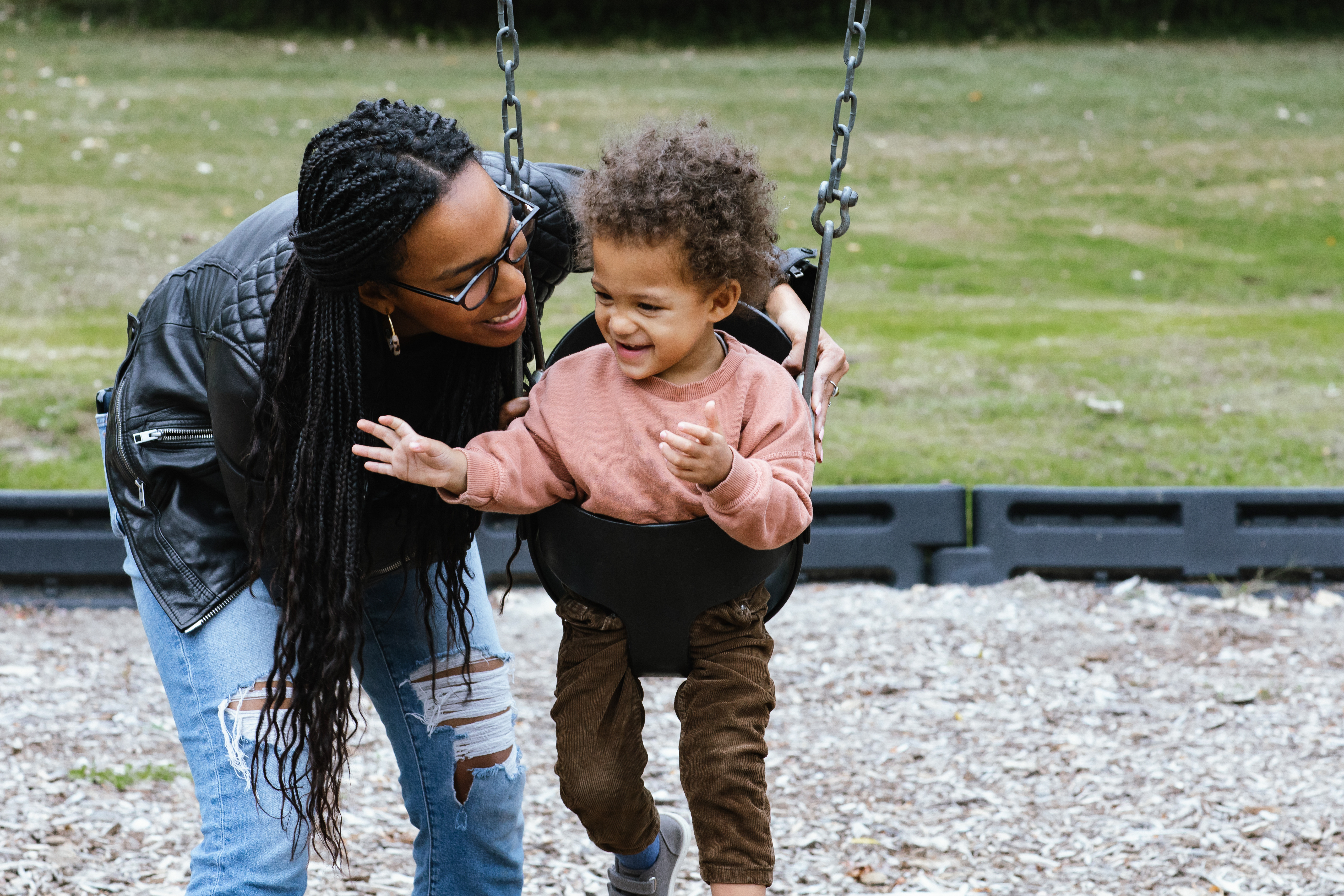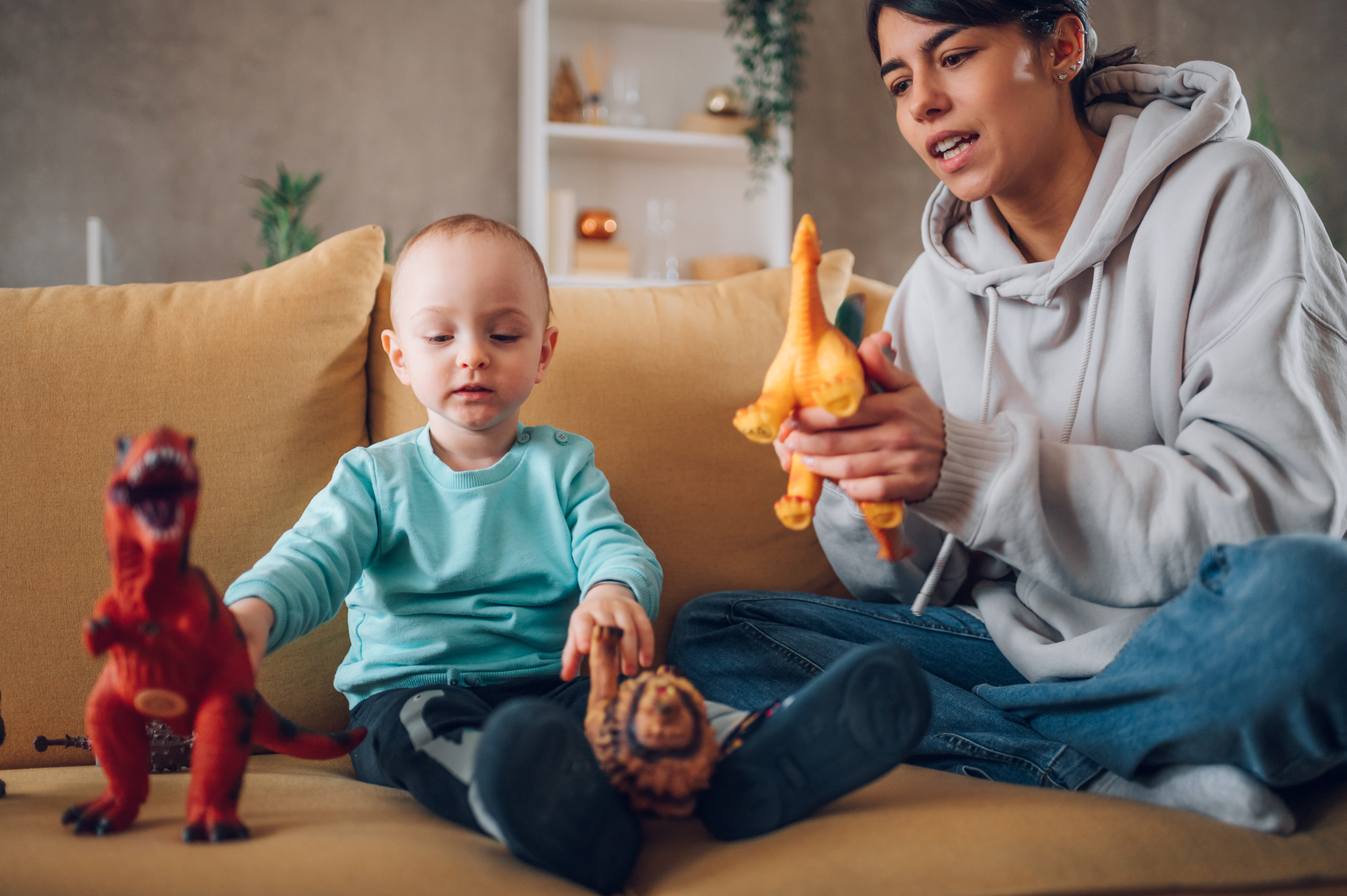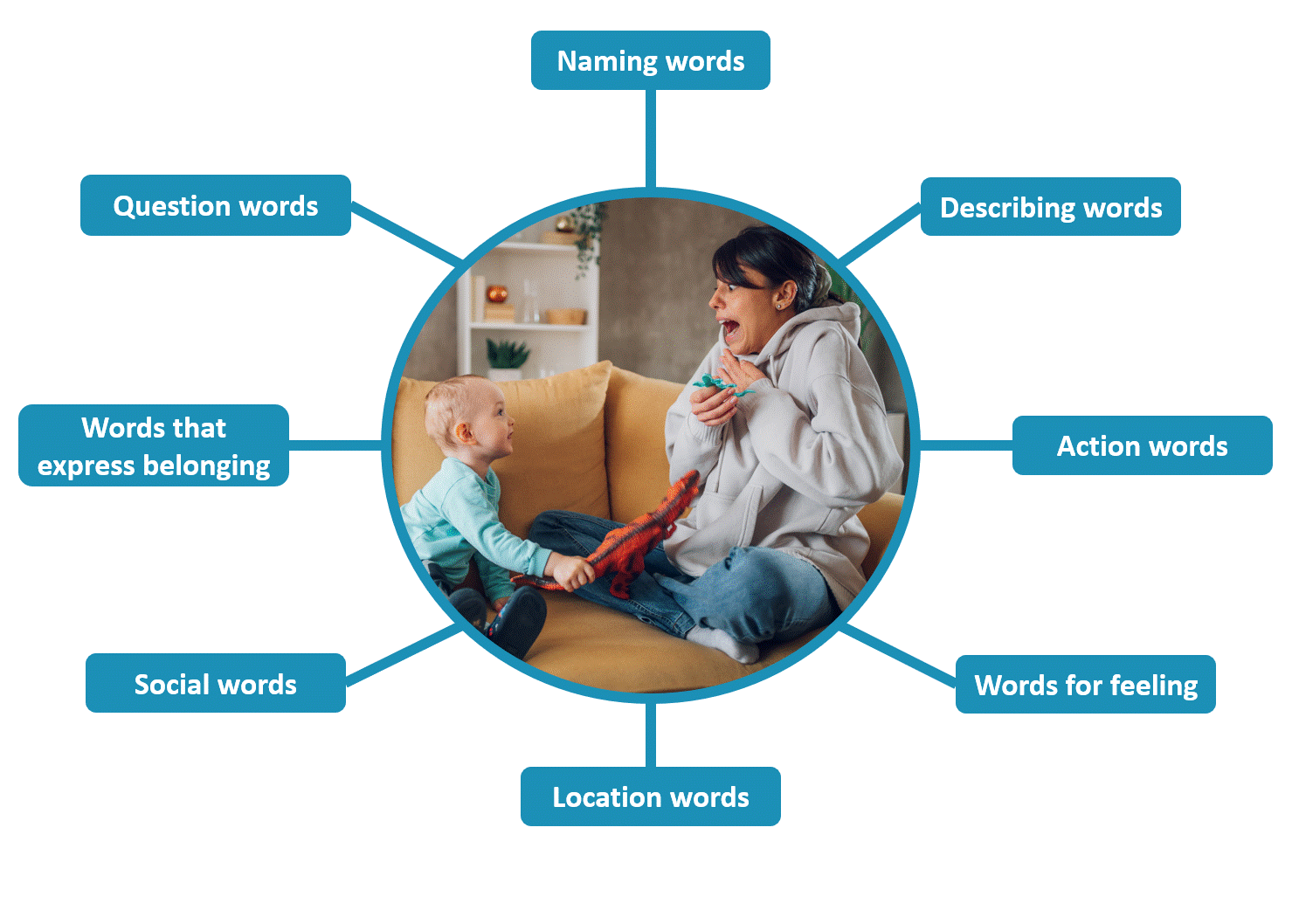Help Parents Build Their Child’s Vocabulary
By: Dashiel Brockman
Hanen SLP and Clinical Staff Writer

 “When will my child say words?”
“When will my child say words?” is one of the most common questions you will hear as a speech-language pathologist (SLP) who works with young children. Parents often view using words as the goalpost that will “resolve” their child’s language difficulties.
In the Hanen
It Takes Two to Talk® Program, parents of children with language difficulties learn the importance of laying the foundation for their child to talk, which includes engaging in fun, back-and-forth interactions with their child. They also learn to support the development of nonverbal communication skills that precede first words.
Sometimes, when a child
is using first words, they may still need support to increase their vocabulary and speak in short phrases. Then parents’ question becomes:
“When will my child say many words?”
So, let’s take a closer look at how you can help parents support vocabulary development once their child is ready to use words.
Using focused stimulation to support language skills
Research shows that
focused stimulation helps children with language difficulties learn new words, which is why it’s built into strategies that parents learn in
It Takes Two to Talk. Focused stimulation comprises three key elements:
- 1. The child and parent share a focus within fun interactions
-

Children with language difficulties are motivated to learn within fun, back and forth interactions with their parent. To help their child learn new words, the first thing parents need to say is… nothing at all!
When parents wait (without talking) for their child to initiate an interaction, it becomes easier to identify which word(s) will be motivating for the child to learn. This is because children communicate about what is interesting to them. In It Takes Two to Talk, parents are guided to reflect on what exactly the child enjoys about an interaction and what their child might want to communicate about.
- 2. The parent repeats important words in response to their child
-
Children hear thousands of words every day in a stream of speech. So, how can we help them learn new words?

When parents repeat words that capture their child’s interests by using simple, grammatically correct sentences, they help the child “extract” the important words from that stream of speech. Even within a fun interaction, children need many opportunities to hear the same word before they may use it themselves.
Repeating words should feel natural rather than a rapid drilling exercise – and parents should repeat the word on and off during the interaction, not all at once. Fortunately, children love to identify patterns and try out fun scenarios over and over again. So, parents can repeat important words in response to their child’s turns in an activity for as long as it stays fun!
You can guide parents to consider other times throughout their child’s day in which they can repeat the same word or other words their child might want to communicate. This provides opportunities for the child to hear a motivating word in a variety of contexts.
- 3. The child does not experience pressure to communicate
-
Children use language when they feel comfortable and motivated to do so. By responding to their child’s turn, parents avoid placing pressure on children to say the word themselves.
This loops parents back to the first element of focused stimulation: waiting expectantly for their child’s next turn.
You can encourage parents to keep waiting for their child’s turns, and to then repeat a word in response to what the child says or does. Studies show that just hearing the word repeated during an interaction (that is, without being asked to say it themselves) is effective in helping children to learn those words.
Different words lead to new possibilities

Recently, I was coaching a parent as she and her child played with toy dinosaurs. The child picked up a dinosaur and said, “Grr!” and the parent responded, “Grr, that’s a T-Rex.”
After she’d repeated the names of the dinosaurs several times, the parent told me:
“I really don’t know what else to say when we play with dinosaurs!”
Labelling items for a child comes naturally to many parents, which means nouns are often a go-to when they repeat words.
But research shows that
children need to hear different types of words regularly to build their language skills. In
It Takes Two to Talk, parents learn to repeat a variety of word types that relate to what their child is most interested in. When asked to reflect on what her child likes about playing with dinosaurs, this parent generated a list of words of different types:

(Weitzman, 2017)
While it’s helpful for parents to brainstorm a variety of words, that doesn’t mean they should use them all in a single activity. In responsive interactions,
children determine which word is best for their parent to repeat.
With several options in mind, the parent I was coaching waited for her child to take the first turn. Then, she repeated a word that matched her child’s interest and message. So, when the child said, “Grr!” the parent responded, “Ah! Your T-Rex is
scary!” Suddenly, the interaction was more fun. The child laughed and tried again: “Grr!” The child had many natural chances to hear their parent repeat a
describing word.
As a child’s vocabulary develops, you can guide parents to make an inventory of all the different words their child understands and uses. Then, determine with the parent which types of words are well represented and which need more support. For instance, if a child already has many
nouns in their vocabulary, the parent can support the child by repeating
action words or
describing words instead.
To sum up
Focused stimulation involves repeating key vocabulary words in response to children’s interests and turns.
Children with language difficulties learn to use new words when they hear their parents repeat important words and a variety of word types in enjoyable, extended interactions.
If parents ask you,
“When will my child say many words?” you can guide them to support their children’s vocabulary development in your parent-implemented intervention.
It Takes Two to Talk supports SLPs by providing resources and training on how to effectively coach parents to use responsive interaction strategies, including focused stimulation, during everyday interactions with their child.
As a student, you are eligible to be trained in
It Takes Two to Talk, so when you graduate you will be certified to run the
It Takes Two to Talk Program or use the resources from
It Takes Two to Talk with your 1-1 clients.
Learn more about our graduate subsidy for
It Takes Two to Talk.
Try it out!
Complete the Interactive Case Example Cas
Back to student portal
References
- Ellis Weismer, S., Venker, C. E. & Robertson, S. (2017). Focused Stimulation Approach to Language Intervention. In McCauley, R. J., Fey, M. E. & Gillam, R. B. (2ed ed.), Treatment of Language Disorders in Children (121-153). Baltimore, MA: Paul H. Brookes Publishing Co
- Jones, G., & Rowland, C. F. (2017). Diversity not quantity in caregiver speech: Using computational modeling to isolate the effects of the quantity and the diversity of the input on vocabulary growth. Cognitive psychology, 98, 1-21.
- Weitzman, E. (2017). It Takes Two to Talk: A Practical Guide for Parents of Children with Language Delays, 5th ed. Toronto, Ontario: The Hanen Centre.